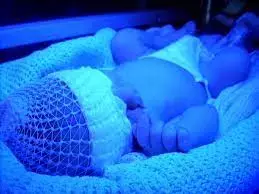- Home
- Medical news & Guidelines
- Anesthesiology
- Cardiology and CTVS
- Critical Care
- Dentistry
- Dermatology
- Diabetes and Endocrinology
- ENT
- Gastroenterology
- Medicine
- Nephrology
- Neurology
- Obstretics-Gynaecology
- Oncology
- Ophthalmology
- Orthopaedics
- Pediatrics-Neonatology
- Psychiatry
- Pulmonology
- Radiology
- Surgery
- Urology
- Laboratory Medicine
- Diet
- Nursing
- Paramedical
- Physiotherapy
- Health news
- Fact Check
- Bone Health Fact Check
- Brain Health Fact Check
- Cancer Related Fact Check
- Child Care Fact Check
- Dental and oral health fact check
- Diabetes and metabolic health fact check
- Diet and Nutrition Fact Check
- Eye and ENT Care Fact Check
- Fitness fact check
- Gut health fact check
- Heart health fact check
- Kidney health fact check
- Medical education fact check
- Men's health fact check
- Respiratory fact check
- Skin and hair care fact check
- Vaccine and Immunization fact check
- Women's health fact check
- AYUSH
- State News
- Andaman and Nicobar Islands
- Andhra Pradesh
- Arunachal Pradesh
- Assam
- Bihar
- Chandigarh
- Chattisgarh
- Dadra and Nagar Haveli
- Daman and Diu
- Delhi
- Goa
- Gujarat
- Haryana
- Himachal Pradesh
- Jammu & Kashmir
- Jharkhand
- Karnataka
- Kerala
- Ladakh
- Lakshadweep
- Madhya Pradesh
- Maharashtra
- Manipur
- Meghalaya
- Mizoram
- Nagaland
- Odisha
- Puducherry
- Punjab
- Rajasthan
- Sikkim
- Tamil Nadu
- Telangana
- Tripura
- Uttar Pradesh
- Uttrakhand
- West Bengal
- Medical Education
- Industry
Phototherapy for neonatal hyperbilirubinemia not associated with childhood cancer: Study

Phototherapy for neonatal hyperbilirubinemia is not associated with any childhood cancer, according to a recent study published in the American Academy of Pediatrics.
The incidence of childhood cancer was higher for infants with phototherapy (25.1 per 100,000 person-years) and untreated jaundice (23.0 per 100,000) compared to unexposed infants (21.6 per 100,000).
A group of researchers aimed to reassess the relationship between phototherapy and cancer in an extended version of a previous cohort and to replicate a report from Quebec of increased cancer risk after phototherapy beginning at age 4 years.
This cohort study included 139 100 children born at ≥35 weeks' gestation from 1995 to 2017, followed through March 16, 2019, in Kaiser Permanente Northern California hospitals who had a qualifying bilirubin level from −3 mg/dL to +4.9 mg/dL from the American Academy of Pediatrics phototherapy threshold; an additional 40 780 children and 5 years of follow-up from our previous report. The exposure was inpatient phototherapy (yes or no), and the outcomes were various types of childhood cancer. We used Cox proportional hazard models, controlling for propensity-score quintiles, and allowed for time-dependent exposure effects to assess for the risk of cancer after a latent period.
The results of the study are as follows:
- Over a mean (SD) follow-up of 8.2 (5.7) years, the crude incidence of cancer per 100 000 person-years was 25.1 among those exposed to phototherapy and 19.2 among those not exposed (233 cases of cancer).
- After propensity adjustment, phototherapy was not associated with any cancer, hematopoietic cancer, or solid tumours
- The researchers also found no association with cancer diagnoses at age ≥4 years.
Thus, the researchers concluded that they did not confirm previous, concerning associations between phototherapy and adjusted risk of any cancer, nonlymphocytic leukaemia, or brain and/or central nervous systems tumours in later childhood.
Reference:
A study titled, "Update on Phototherapy and Childhood Cancer in a Northern California Cohort" By Jean C. Digitale, et al. was published in the Pediatrics.
DOI: https://doi.org/10.1542/peds.2021-051033
Dr. Shravani Dali has completed her BDS from Pravara institute of medical sciences, loni. Following which she extensively worked in the healthcare sector for 2+ years. She has been actively involved in writing blogs in field of health and wellness. Currently she is pursuing her Masters of public health-health administration from Tata institute of social sciences. She can be contacted at editorial@medicaldialogues.in.
Dr Kamal Kant Kohli-MBBS, DTCD- a chest specialist with more than 30 years of practice and a flair for writing clinical articles, Dr Kamal Kant Kohli joined Medical Dialogues as a Chief Editor of Medical News. Besides writing articles, as an editor, he proofreads and verifies all the medical content published on Medical Dialogues including those coming from journals, studies,medical conferences,guidelines etc. Email: drkohli@medicaldialogues.in. Contact no. 011-43720751


